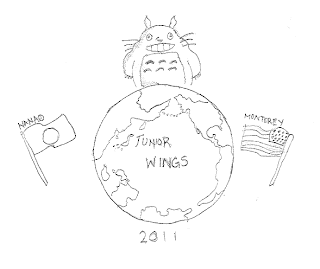 |
| Yamato Bath House 1911 |
San Jose's Japantown began as did many other communities with the need to combine comradeship and resources to survive as immigrants in a new country. It began near what was known as Heinlenville Chinatown between Jackson and Taylor east of Sixth Street. After the city's second Chinatown burned to the ground under mysterious circumstances, John Heinlen offered his own property for the new location. Mr Heinlen built a new Chinatown entirely of brick despite outrage from the general public. He then rented these buildings to the Chinese at very low rates.
Japanese, new to the country, eventually chose to build their wooden buildings next to Chinatown. Because the Chinese had already settled there, the environment was more familiar to them
Most of Japantown was comprised of single men who found employment in the fruit orchards. Living in the barest of accommodations and having left family and friends at home, their lives were harsh and lonely.
 |
| Issei Memorial Building |
With as many as 3,000 seasonal workers finding shelter during the spring and summer growing and picking seasons, Japantown , by 1902 had a community of Japanese businesses catering to the society of the single men. The Gentlemen's Agreement of 1907 changed the fortunes of the men when wives and children were finally allowed to emigrate from Japan. The nature of the town changed also along with the advent of families and grocery and clothing stores made their appearances.
Misfortune struck again when the U.S. Government forbade female immigration in 1921. Marriage between Caucasians and Asians was illegal in California. With 42 percent of the male population yet single, the problems of community were profound. However, this also caused people to form clubs based upon prefectures from which the people immigrated. These clubs were called “kenjinkai” and helped to form Nihonmachi (Japantown) into a community.
Businesses sought to accommodate their customers by staying open in the evening and on weekends. The Japanese merchants lived behind their places of business with their families.
 |
| Buddhist Church Betsuin |
December 7, 1941, the bombing of Pearl Harbor, saw the evacuation and relocation of the Japanese community on the West Coast of the United States. This would errevocably change the face of the nation and cause a legacy for Japanese Americans that is reflected in the lives of the community today. Most of Santa Clara's 3,000 Japanese-American residents were interned at Heart Mountain, Wyoming from the relocation centers. Almost all of Japantown's fifty-three businesses closed during internment. Since little time was given to dispose of property and belongings and only a limited amount (150lbs) per person which no one could carry, was allowed to be taken along on the buses and trains to the relocation centers, people sought to store their belongings in the Buddhist and Methodist Churches. As can be imagined, property and personal losses were staggering.
In December of 1944 the Japanese internment policy was revoked. By 1947, 40 businesses and 100 families had re-established themselves in this area.
If you walk down Jackson Street today you will no longer see families living behind their stores, but you will experience the increasingly rare feeling of a neighborhood where history and heritage reside in the keepers of the shops and the people walking along the streets. Restaurants, specialty stores and gift shops, reflect Chinese and Japanese heritage which is carefully preserved by nearby residents and shopkeepers alike. Professional services, doctors, dentists, lawyers, non-profit organizations and churches flourish. Every Sunday morning there is a Japantown Farmers' Market on Jackson Street east of Japantown where both locals an out-of-towners come to buy fresh vegetables, baked goods, or flowers. In this country, where most other Japanese-American neighborhoods were lost after the internments of World War II, San Jose's Japantown is a rare treasure.










